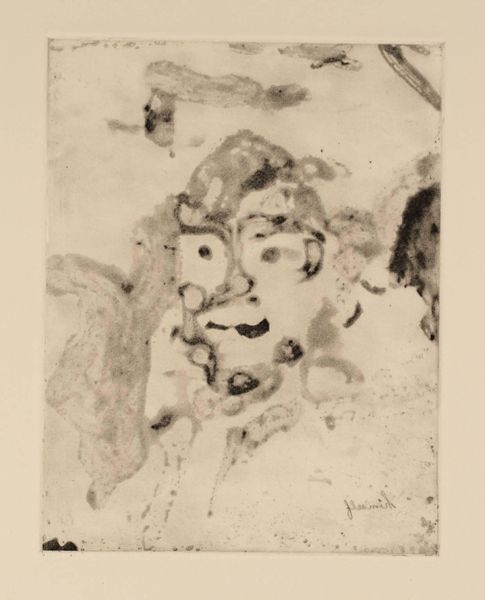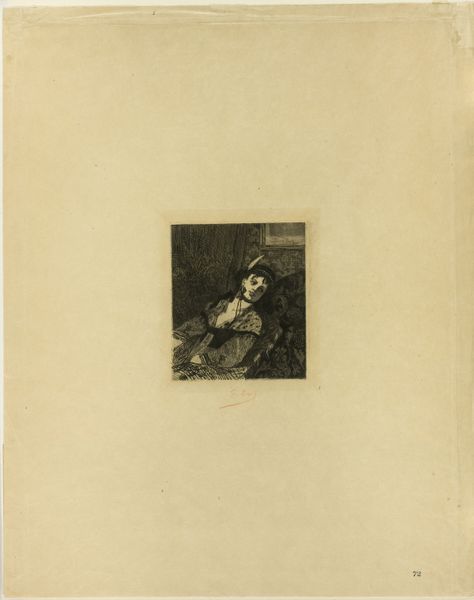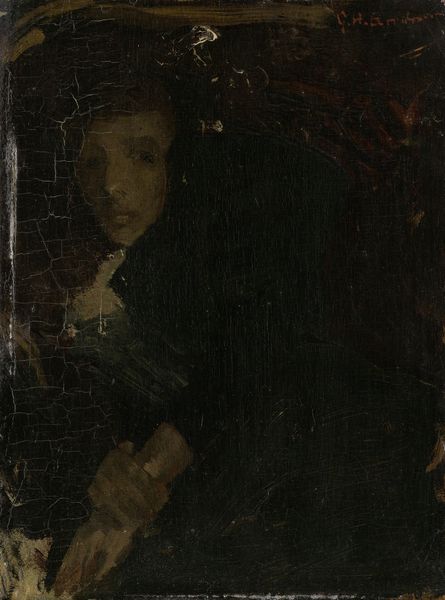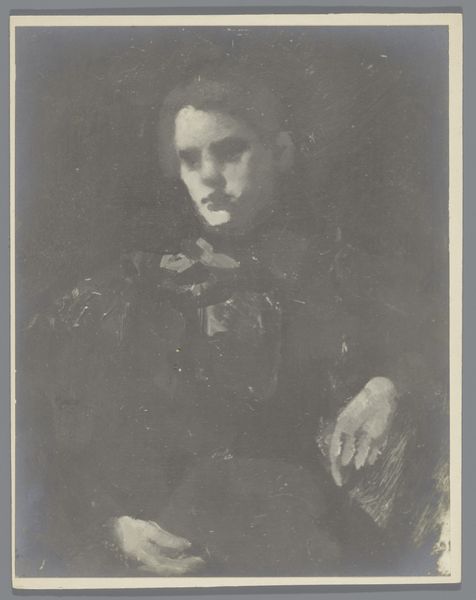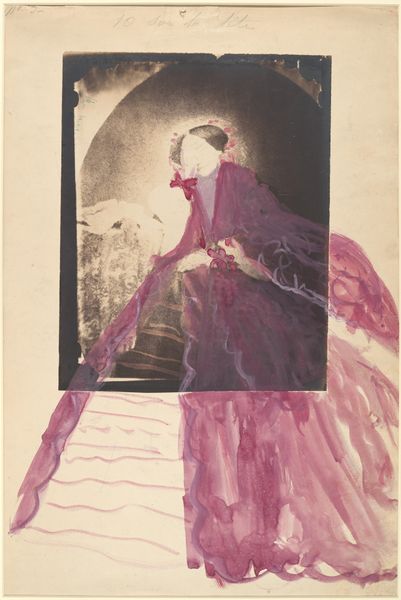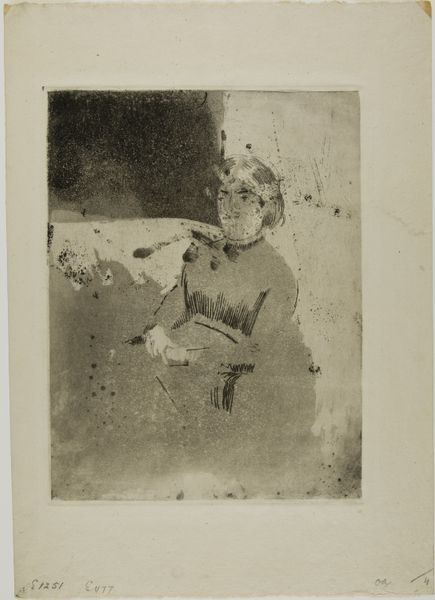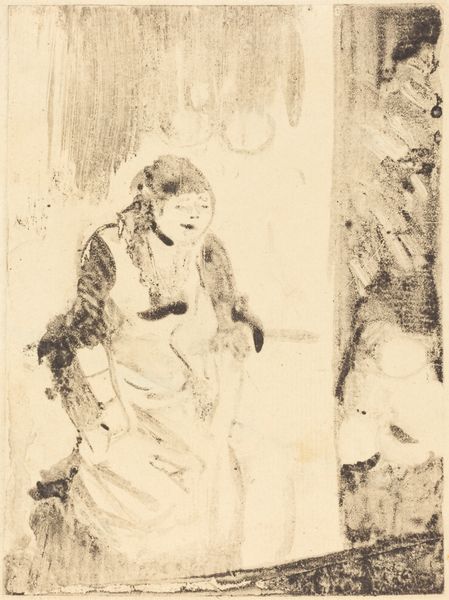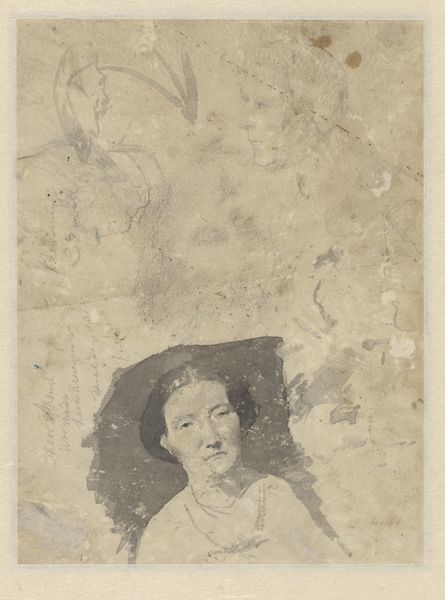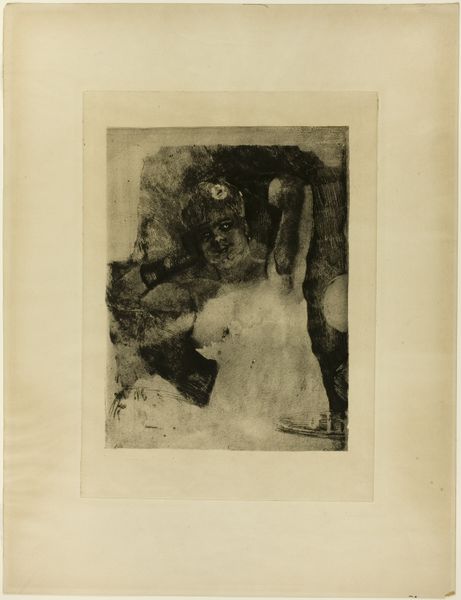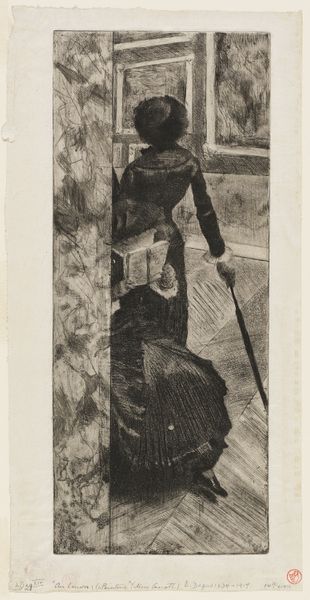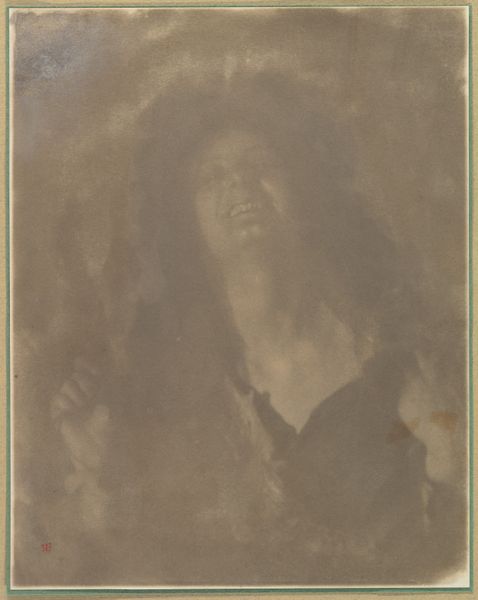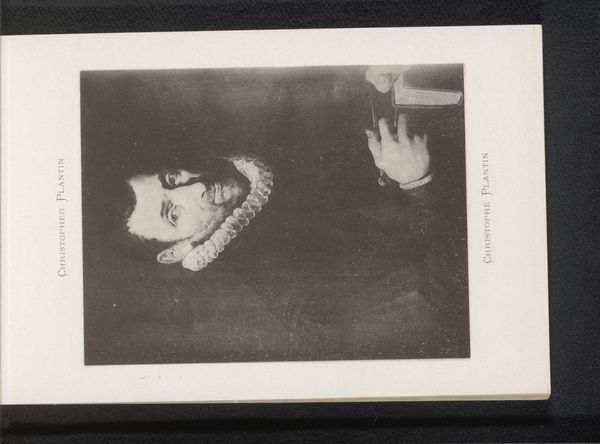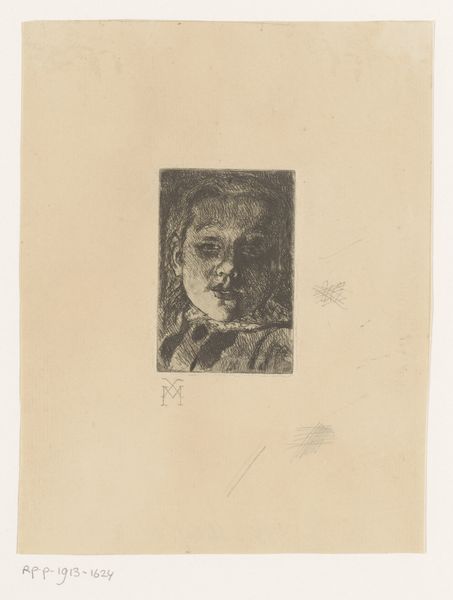
Fotoreproductie van een schilderij van een liggende vrouw naar George Hendrik Breitner 1886 - 1910
0:00
0:00
Dimensions: height 218 mm, width 166 mm, height 230 mm, width 174 mm
Copyright: Rijks Museum: Open Domain
Editor: Here we have George Hendrik Breitner's "Fotoreproductie van een schilderij van een liggende vrouw" created sometime between 1886 and 1910. It's an oil painting and I'm struck by how dark and intimate it feels. What do you see in this piece, and how do you interpret its message? Curator: Well, immediately I think of the late 19th century’s complex relationship with female representation. The female nude had been a staple, but Breitner’s portrayal feels different. The sitter is not idealized; instead, there's a rawness. This suggests an attempt to break away from academic tradition. Editor: So you’re saying Breitner’s challenging the traditional, perhaps objectified, view of women? Curator: Exactly! Consider also Breitner’s association with the Amsterdam Impressionists. They aimed to depict modern, everyday life. What does that imply for a piece like this? Is he simply capturing a moment, or making a statement? Does the ambiguity in her expression contribute to this interpretation? Editor: The sitter’s gaze seems distant. The work avoids obvious emotional cues that further pushes against idealization. Perhaps the painting is about something as ordinary, and potentially radical, as the subject's private life. Curator: Precisely. Also, let’s consider how the artwork might resonate with contemporary discussions around body image and representation. Do you see connections with any modern concepts related to feminism, gender studies, or intersectionality? Editor: That's a powerful point. The work's apparent realism, especially given the historical context of its creation, allows for a contemporary reading. Looking at art as cultural discourse changes my perspective completely. Curator: Absolutely. By viewing art through a lens that engages history and socio-political concerns, we're able to develop a richer understanding and really draw links from then until now.
Comments
No comments
Be the first to comment and join the conversation on the ultimate creative platform.
